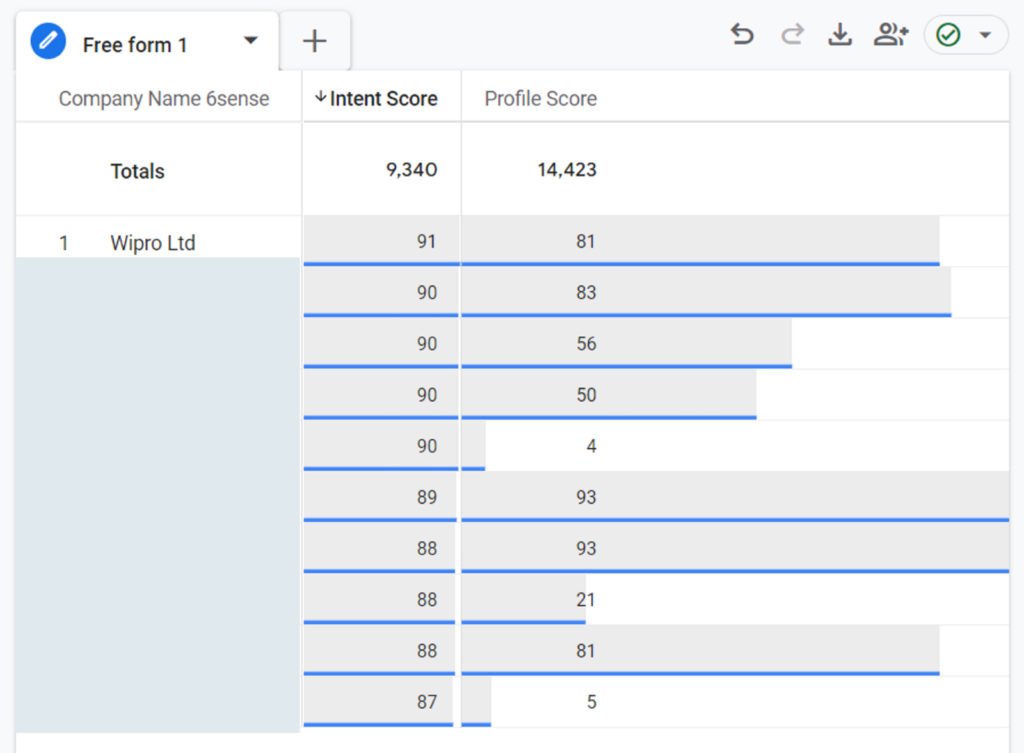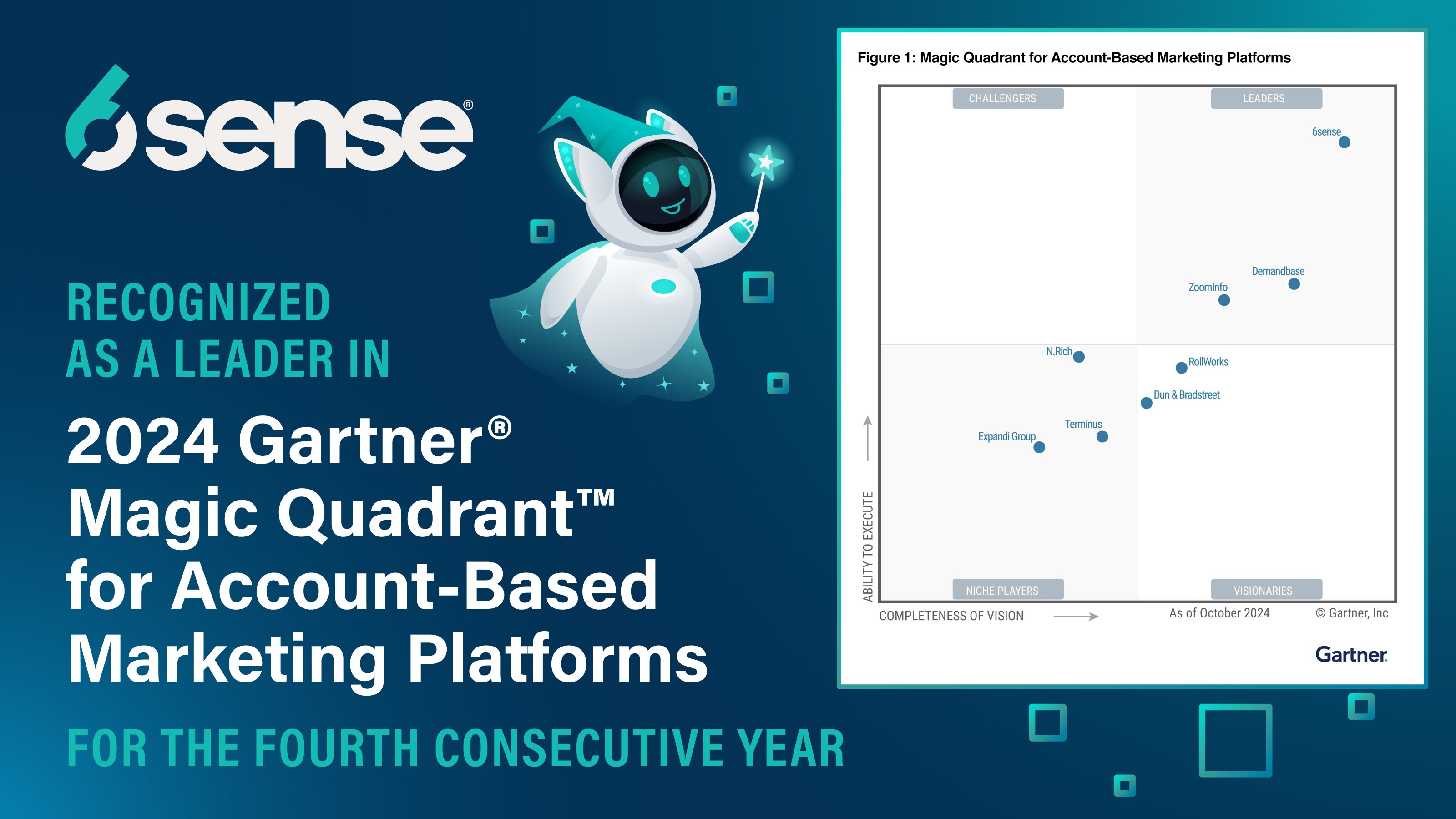By: Jim Vaillancourt, Founder of Lionhurst
Lionhurst is a digital marketing agency recognized as a Google Ads Product Expert. The company is one of three U.S. Gold Product Experts in the official Google Ads community. Lionhurst partners with 6sense to enhance Google Ads targeting strategies. Jim Vaillancourt, a key member of the team, brings expertise in exploring the technical details of GA4 and 6sense to optimize campaign performance.
Dremio, the data lakehouse platform for self-service analytics and AI, is seeing a big increase in demand for data products like theirs.
A big part of their growth strategy involves 6sense and search engine marketing. According to a 2022 study by Bain, search engines are the most used source in the B2B buying process (used by 84% of B2B buyers). If you are not in a top 3 organic position on an important search term, then you need to supplement with paid search. The top 3 organic positions capture 2/3 of all organic traffic.
Dremio was driving leads through Google Ads but they weren’t converting to pipeline to justify the level of spend. By integrating 6sense with Google products, pipeline driven through Google Ads increased by 90% and sales qualified opportunities by 115% in just two quarters.
Their digital agency, Lionhurst, will walk you through the steps that they took to integrate 6sense with Google products.
The Challenges
Before the 6sense integration was set up, Dremio was optimizing Google Ads to form completions. This was problematic because only a small percentage of visitors submitted a form. The average conversion rate for nonbrand search on B2B forms is between 1 – 3%. By only optimizing to those conversions, companies starve Google of the data that it needs to make accurate bidding decisions.
“Dremio was in a great position since it had a 6sense model that had been trained with over 2 years of intent data and pipeline generation. This was a valuable asset that had been underutilized for ad targeting. Since Jim and his team at Lionhurst integrated 6sense to align our bidding to best fit customers, Paid Search has quickly become our top performing digital marketing channel for quality pipeline.”
Whit Rothe
Director of Growth, Dremio
For Google Ads to run efficiently, it requires a high quantity of accurate performance data. This is because most larger companies use Smart Bidding, which allows Google to set the bid for every search auction in relation to the goals of the account. The set bid is based on the expected performance of that user when they reach the site.
If Google doesn’t have conversion information on 98% of clicks, it will not be able to set accurate bids. When bids in an account have a spread of $0.50 – $100, it’s important to get it right. 6sense helps provide more and better conversion data. Google Ads also lacks firmographic targeting. B2B advertising is about more than just finding people interested in your solution, it’s about finding these people who work at the right companies. Many firmographic attributes that you can use to build segments in 6sense do not exist in Google Ads.
The Solution
Dremio was able to overcome these challenges by integrating 6sense with Google products. The first step is to set up the 6sense webtag to integrate with Google Tag Manager by pushing the 6sense firmographic and predictive attributes to the data layer. After this is complete, these attributes can be sent over to Google Analytics and be used to enrich custom explorations (full instructions).
Google Analytics
Google Analytics becomes a much more powerful platform when enriched with 6sense firmographic data. This allows you to see every identifiable company that completes a certain action on site, such as a demo or page view. In addition, you can see how qualified these companies are by leveraging profile and intent score:

(GA4 exploration of companies that have signed up for demos, using three new fields from 6sense)
The other useful feature of Google Analytics is to build audiences and segments based on 6sense segments. This allows these audiences to be synced to Google for targeting or bidding purposes. A few tactics that you can use these audiences for:
- Retarget YouTube and Display ads to specific 6sense segments (e.g., visitors that match your Ideal Customer Profile)
- Target an expanded set of searches if a user is in a valuable 6sense segment
- Prevent low quality visitors from clicking Google ads in the future

(GA4 audience built using 6sense segments and predictive attributes)
Google Ads
The most impactful way to leverage 6sense with Google Ads is via your measurement strategy. Your measurement strategy dictates how effectively Google is able to set bids, which directly correlates to ROI. This integration solves the biggest issue with measurement for B2B: a lack of data.
You can increase data quantity by:
- Tracking conversions from ICP visits: Measure which clicks are from your ICP, then use those signals to ask to Google to drive more of them! This will also allow you to see which keywords drive the most ICP traffic.
- Tracking conversions based on buying stage: If you feel that a certain buying stage is more valuable to drive to the site (e.g., decision) then you could track those visits as conversions.
Increase data quality by:
- Using profile scores for dynamic conversion values: Not all demos are worth the same to the business. A demo signup from a prospect with a 6sense Profile Score of 99 is more valuable than a demo signup from a prospect with a Profile Score of 2. Incorporate profile score into the conversion value using Google Tag Manager.
- Increase bids for valuable audiences: Use Conversion Value rules for top audiences, like ICP. This will tell Google to spend more on auctions for these visitors.
Implementing these strategies led to a decrease in total leads through Google Ads, however pipeline driven through Google Ads increased by 90% and sales qualified opportunities by 115% in just two quarters.
 Skip to content
Skip to content



